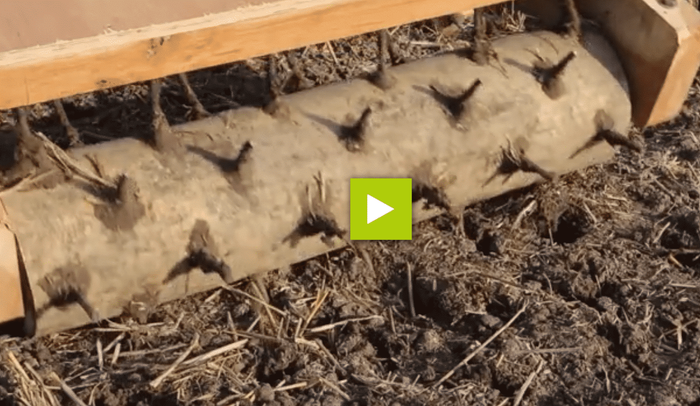Continuous use of chemical fertilizers and weedicides damage soils and kills beneficial organisms. Machines also plough so deeply that fertile top soil goes down and infertile soil up, and compact the soil.
As a result the soil loses it‘s structure, becomes hard making crops have well and have poor root penetration and don‘t germinate well. A clod breaker can be used to plough the land as it breaks the soil into finer particles.
Benefits of clod breakers
Animal clod breakers are a type of harrow that roll across the field and breaks soil into finer particles. It reaches a depth of 15cm only and uses no fuel making it good for the environment.
A clod breaker can be used to prepare the nursery and field, on any type of soil for any crop, unploughed land or after a single round of land preparation. Soil with good structure has more pores to store water for good crop growth.
A clod breaker helps spend less time and energy in management of weeds as it exposes hidden weeds to the sun which kills them.
Build a clod breaker
Clod breaker is made from any type of strong wood. A log of 30cm is cut in diameter and 1 m long then the bark is removed to shape it into a smooth cylinder.
Two flat wedge shaped wooden blocks are cut about 8cm thick and 1 m long, the centre portion of the narrow end is cut 2-4 cm wide and 5-10 cm deep. At the end of the wooden blocks, attach an iron plate of 5 by 3 cm to a large loosely fitted iron rode for easy rotation.
Attach the wooden logs of 2 m long and 8 cm radius to the centre to make the yoke.
Land preparation
A clod breaker is hand pulled by two people or two bullocks can drag the wooden log with someone sitting on the sit. Drag the clod breaker is 4-6 times on the same day over the nursery bed in alternate directions.
To prepare fields, drive the clod breaker 3-5 times over the field from one end to the other.



















